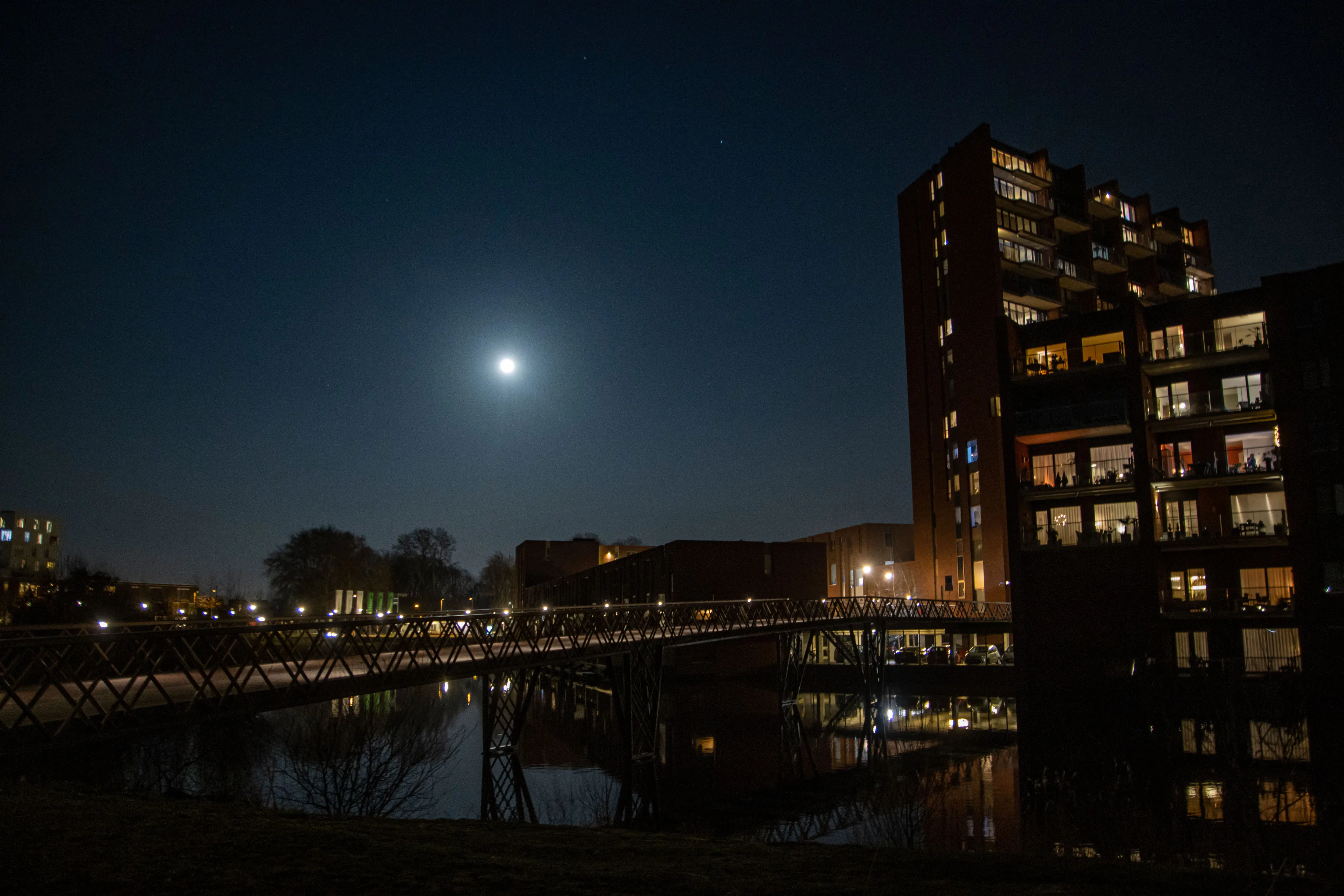Fomalhaut lights up the southern sky as autumn begins — where and when to see the bright star this season
-
 Snow Moon of February 2021 rises over a residential area. The full moon of earth natural satellite as seen illuminating the lunar light in the night sky of Europe. February's full moon, traditionally known as the Snow Moon rises over Eindhoven in the Netherlands. Eindhoven, Netherlands on February 27, 2021 (Photo by Nicolas Economou/NurPhoto via Getty Images)
Snow Moon of February 2021 rises over a residential area. The full moon of earth natural satellite as seen illuminating the lunar light in the night sky of Europe. February's full moon, traditionally known as the Snow Moon rises over Eindhoven in the Netherlands. Eindhoven, Netherlands on February 27, 2021 (Photo by Nicolas Economou/NurPhoto via Getty Images)As the nights get shorter and the evenings get cool, one brilliant star in the southern sky softly signals the beginning of autumn. It is Fomalhaut, a very bright and easily seen star in the evening sky. Its appearance signals a change of season each year and provides stargazers with a lovely reason to gaze up.
What is Fomalhaut
The "solitary" fall star Fomalhaut (say FOE-ma-lot) is also known as the "lonely star" of fall. While most of the bright stars are seen as part of well-known constellations, Fomalhaut exists independently most of the time. It glows in a very faint constellation named Piscis Austrinus, or the "Southern Fish."
Since there are not too many bright stars around, Fomalhaut is prominent in the southern heavens, shining with a pale white or blue light. This makes it very easy to spot, even for beginners who are learning to observe the heavens.
Fomalhaut, the astronomers claim, is some 25 light-years from Earth — that is, the light we're seeing tonight has been gone from the star for 25 years. It's one of the nearest bright stars to our neighborhood and is about 16 times as luminous as the Sun.
When and where to see it
Fomalhaut becomes visible in the early autumn months, especially from late October through November. The best time to spot it is usually around 8 p.m. to 10 p.m., when it sits low in the southern sky.
To find it, face south after sunset and look for a single bright star shining in an otherwise quiet part of the sky. If you’re in a city, try finding a dark area away from bright streetlights or tall buildings — even light pollution can make it harder to spot faint stars nearby.
For those in the Northern Hemisphere, Fomalhaut doesn’t rise very high, so you’ll find it glowing low along the southern horizon. In the Southern Hemisphere, it appears much higher in the sky, making it an even more striking sight.
Why Fomalhaut is unique
Fomalhaut isn't only a stunning star — it's scientifically interesting, too. Astronomers have learned that it's encircled by a huge ring of dust and debris, like the beginnings of a planet-forming system. That makes it one of the most researched stars outside our solar system.
NASA's Hubble Space Telescope, in 2008, took a picture of a possible planet orbiting Fomalhaut, which at the time was a groundbreaking discovery. Follow-up observations indicated that what scientists believed was a planet could be an accumulation of dust formed by colliding objects — another reminder that space is unpredictable.
A sign of changing skies
For centuries, Fomalhaut has been a seasonal indicator for sky observers. Like Orion fills the winter sky and Vega lights up summer, Fomalhaut has its turn in fall. Its yearly return informs us that the year is trending toward its quieter, cooler half. Stargazers tend to regard Fomalhaut as a transition symbol — the light that comes between summer's brilliance and winter's extended darkness.
Tips for stargazing
To optimize your view, go outside on a moonless evening with clear skies. Give your eyes a few minutes to adapt to the dark. You don't need a telescope to notice Fomalhaut, but binoculars will make its light even more enjoyable to behold. If you're fortunate, you may see soft stars in the vicinity making up the shape of the "Southern Fish" constellation.
TOPICS: Fomalhaut